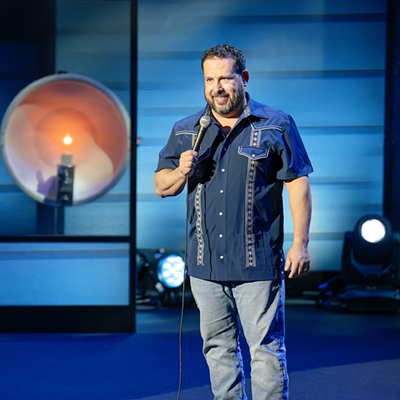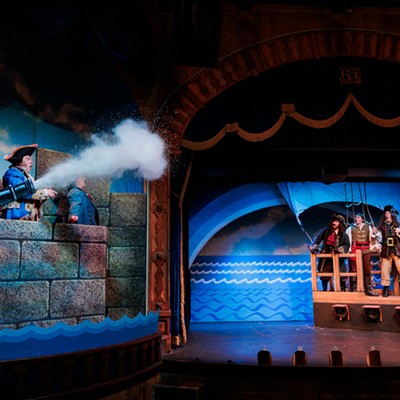It all started more than 450 years ago when Francisco Vasquez de Coronado, a particularly parched Spanish explorer, prayed for water.
According to the legend, he stood on the bank of the desperately dry Santa Cruz River and prayed to St. John the Baptist to bring the rains to help the crops. On June 24, 1540, it rained, and in a demonstration of his faith, Coronado declared that from that day forward, the summer rains would come on June 24 every year.
Today, it is a Tucson tradition to celebrate the beginning of the rainy monsoon season on June 24 in honor of St. John. Originally introduced to our region by Spanish missionaries in the 1600s, the celebration was resurrected and reintroduced to Tucson by residents of the westside neighborhoods in 1998. Thus, this year's event will be the 12th annual Dia de San Juan Fiesta.
Carlos Romero, an aide to Ward 1 City Councilwoman Regina Romero and one of the event organizers, explains that the day's festivities will begin with a blessing, followed by a procession along the river made up of elders in the community (and anyone else who wants to join in). For kids, there will be activities like face-painting and piñatas, plus a fire truck doing water displays. There will also be booths set up by local organizations.
"There will be information on everything from the food bank to mosquitoes," says Romero.
Local musicians will be on hand to entertain, including mariachis and Tucson native Gabriel Francisco playing classical guitar. Dancing will be provided by Folklórico Danzacultura Mexicana, a nonprofit organization that has given kids the opportunity to show off their dancing talents for 15 years.
But the real attraction, Carlos Romero says, is the Mexican rodeo—the charreada. With events for both men and women, the charreada offers a chance to demonstrate traditional roping, riding and ranching skills. A festival of its own, the charreada incorporates traditional music (like mariachi) into competitive and celebratory horse events performed by charros, charras and vaqueros (cowboys and cowgirls).
The main event at the charreada is the escaramuza horse dancing. Escaramuza literally translates into "skirmish" and is meant to evoke the image of the soldaderas or adelitas, female soldiers who fought and died beside the men in the Mexican Revolution. Escaramuzas perform intricate routines at high speeds while riding sidesaddle. Relying on precision timing to keep them safe, the escaramuzas perform cruces (crossing through each other) and giros (spinning 180 or 360 degrees). The group performing on Wednesday, Florecitas del Desierto, is located here in Tucson and participates professionally in state, regional and national levels of competition. The Florecitas del Desierto, like all competing escaramuza groups, must adhere to strict traditional guidelines. This means that everything—from their clothing, to the tack for their horses, to their performance music—must be authentic and traditional.
The fiesta has existed for more than a decade as a way to remind residents of Tucson of the importance of water in our desert—and this year, event organizers are aiming to include as many people as possible in the celebration. "Everybody is welcome," says Carlos Romero. "We want everyone to make it, not just those from the westside."
The event is open to all Tucson residents and aims to celebrate Tucson's history and culture as a whole city—just in time for el chubasco, the monsoon rains.
"Basically," concludes Carlos Romero, "it's a chance to have a good time, eat some great food and enjoy a Tucson tradition."








